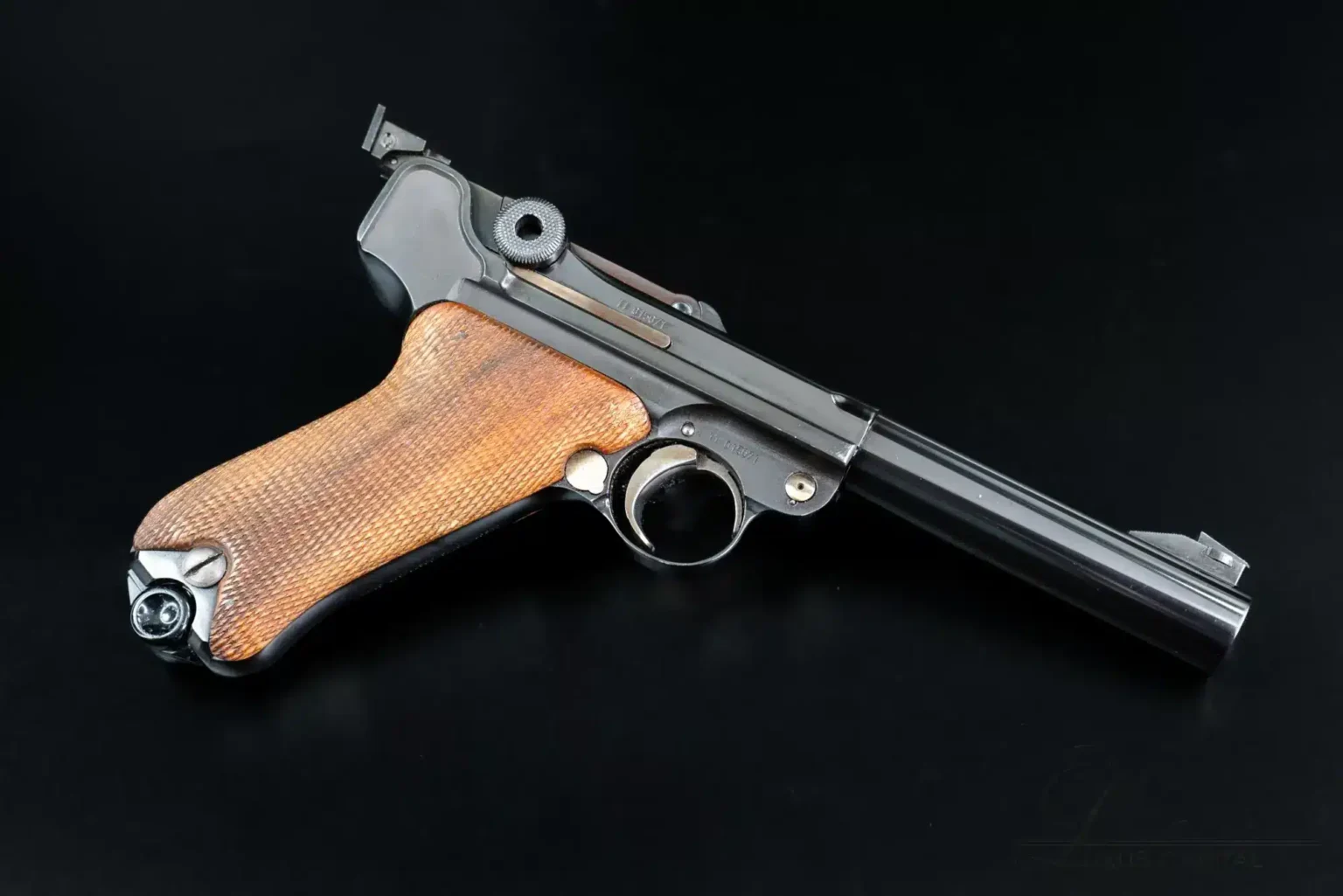Introduction
The Luger pistol is a paragon of design and innovation in the pantheon of firearms. Its name is synonymous with the golden age of gunmaking—a time when form and function met with precision and elegance. Georg Luger’s masterpiece, officially known as the Pistole Parabellum, established itself as a weapon of choice from the trenches of World War I to the holsters of European police officers. But as technology marched on, the Luger, like many of its contemporaries, found itself a relic of a bygone era—revered yet outpaced.
Now, in a world that has seen the rise of polymer frames and striker-fired reliability, a question emerges from the echelons of enthusiasts and experts alike: Can the Luger be reborn, not merely as a collector’s curiosity but as a modern firearm contending in the 21st-century market? This inquiry has sparked a movement toward what is now celebrated as the ‘modern Luger pistol,’ a harmonious blend of historic craftsmanship and modern engineering.
The Legacy of Georg Luger: Engineering Genius
Georg Luger’s legacy is etched not merely in the steel of his eponymous pistol but also in the annals of firearms history. Born in 1849, Luger was an Austrian inventor and designer whose work on the Borchardt C-93 led to the development of the Luger pistol. The Borchardt-Luger model would eventually evolve into the Pistole Parabellum, a firearm that was as much a work of art as it was a feat of engineering.
The genius of Luger’s design lay in its simplicity and mechanical innovation. The pistol’s toggle-lock action was a marvel of the era, offering a balance of strength and precision that was unmatched at the time. The ergonomic design, characterized by a distinctive grip angle, provided a natural point of aim, making it intuitive for shooters of all skill levels.
As we forge into the narrative of the modernized Luger, we delve deeper into the mind of Georg Luger—the man whose vision set the standard for what a semi-automatic pistol could be and whose influence now guides the hands of those seeking to reimagine his creation for the modern marksman.
The Call for Modernization: Adapting to New Age Demands
In an era where firearms are expected to deliver the utmost reliability and versatility, the call to modernize the Luger pistol is both a nod to its historical significance and a response to practicality. This isn’t about altering history but enriching it, giving new life to a design that has captivated gun aficionados for over a century. The aim is to produce a weapon that retains the classic feel of the original Luger while ensuring it meets the demands of modern-day shooters.
Modernization is not just about swapping old and new parts; it’s a comprehensive reimagining. This means improving the metallurgy for enhanced durability, refining the ergonomics for better handling, and upgrading the internal mechanics to be compatible with today’s more powerful and diverse ammunition. The modernized Luger is poised to offer the precision of its forebear with the resilience required for current shooting environments.
Aesthetic Preservation: Honoring the Iconic Design
While the internals are ripe for innovation, the external design calls for preservation. The Luger’s silhouette is iconic—the toggle-lock action, the steep angle of the grip, and the curved lines of the frame are all part of its legendary status. Modern designers are thus faced with the delicate task of updating the Luger’s performance without diluting its visual and tactile identity.
For many, the Luger’s aesthetic is sacrosanct, a tangible link to the past. While the modernized Luger may feature stainless steel construction or fiber-optic front sights, its outward appearance remains faithful to the original. This respect for tradition is not just about appearances; it ensures that the soul of the Luger continues to shine through in its modern iteration.
The Modern Luger in the Shooter’s Grip: Performance Upgrades
A modern Luger in the hands of a marksman is where history and progress coalesce. The enhanced front sight, improved barrel, and precision-engineered internals translate to a shooting experience that is both familiar and exhilarating. Whether used in competitive shooting, for personal defense, or simply as a range gun, the modern Luger is designed to perform.
The improvements extend to the pistol’s operation. The action is smoother, the trigger pull more consistent, and the overall mechanism is refined for reliability. The modern Luger isn’t just built to shoot—it’s built to shoot with the same grace and efficiency that made the original a legend, now amplified by modern standards.
Technical Challenges: Merging Past with Present
The path to modernizing a classic like the Luger is strewn with technical challenges, each demanding a meticulous balance between reverence for the original and the imperatives of modern functionality. Adapting a turn-of-the-century design to 21st-century expectations is a task that marries historical insight with cutting-edge technology. The iconic toggle-lock action, for instance, must be re-engineered to cope with the higher pressures of modern 9mm ammunition while preserving the smooth cycling that is the hallmark of the Luger.
Materials science plays a pivotal role here; the original Luger was crafted from the finest steels of its time, but modern metallurgy offers stronger, lighter, and more corrosion-resistant materials. The challenge for modern gunsmiths is to integrate these materials in a way that remains true to the Luger’s heritage. This might involve CNC machining parts for precision fitment or utilizing advanced coatings to protect against wear and enhance functionality.
Contemporary Craftsmanship: The Artisans Behind the Modern Luger
Today’s artisans who dare to modernize the Luger are a breed apart. They are gunsmiths with a deep appreciation for history and an equally profound commitment to craftsmanship. These modern-day Lugers are often the product of small, specialized workshops where traditional gunmaking skills are passed down through generations, now augmented by the precision of modern machinery.
These craftsmen and women undertake the task with a sense of duty to both the past and the future, ensuring each modern Luger is not merely a firearm but a piece of living history. The work is labor-intensive, requiring hours of hand-fitting, tuning, and testing to ensure that each modern Luger meets the high standards set by its progenitor.
The Luger in Modern Culture: From Military to Movies
The Luger pistol’s influence extends far beyond the firing range or the collector’s cabinet; it has a storied place in modern culture. Its distinctive profile has been featured in countless films and books, symbolizing everything from the villainy of historical foes to the ingenuity of early 20th-century design. As such, the modern Luger carries with it not just a physical lineage but a cultural one.
In bringing the Luger into the modern era, enthusiasts are not just preserving a piece of history but perpetuating its mythos. The modern Luger bridges the tales of old wars, spy thrillers, and the present-day narrative of firearms innovation.
The Market for Modern Lugers: Collectors and Shooters Alike
The renaissance of the Luger pistol in its modernized form has created a unique niche in the firearms market. On one hand, there are the purists and collectors, for whom the Luger is a piece of tangible history, a link to the craftsmanship and ingenuity of the past. The modern Luger offers these enthusiasts an opportunity to own and shoot a classic, with the added benefit of contemporary reliability and functionality.
On the other hand, there are practical shooters who appreciate the Luger for its ergonomic design and shooting dynamics. To them, the modern Luger is not a museum piece but a living, breathing instrument of precision, equally at home in a shooting competition as it is in personal defense scenarios.
The demand is met by a limited supply, often with custom or small-batch production runs, adding exclusivity to the modern Luger. This scarcity and high manufacturing costs typically position the modern Luger at a premium price point, making it a luxury item rather than a mainstream choice.
Comparing Classics: The Modern Luger Versus Its Peers
In the realm of modernized classic firearms, the Luger is not alone. Other historical pistols have also received modern makeovers, each with its own set of upgrades and improvements. A comparison of the modern Luger to these contemporaries reveals a spectrum of approaches to the concept of modernization. Some adhere strictly to the original designs, while others take more liberal routes, incorporating significant changes to improve performance and usability.
The modern Luger’s unique position in this landscape is defined by its balance of form and function. While it competes with more radical redesigns of other classics, it remains steadfast in preserving the essence of Georg Luger’s original vision. This is not a pistol redesigned; it is a pistol refined.
Conclusion
The modern Luger pistol is a testament to the enduring allure of a design that has captivated shooters for generations. It bridges the gap between the romanticism of early 20th-century firearms and today’s technological advancements. For some, it is a collectible, a conversation piece imbued with the spirit of a bygone era. For others, it is a practical choice, a tool for sport, defense, or simply the joy of shooting.
In either case, the modern Luger remains what it has always been—a marvel of design, a symbol of innovation, and a pinnacle of firearms engineering. As we consider the future of firearms, the modern Luger stands as a reminder that some things are timeless, transcending the eras they emerge from to become legends in their own right.



